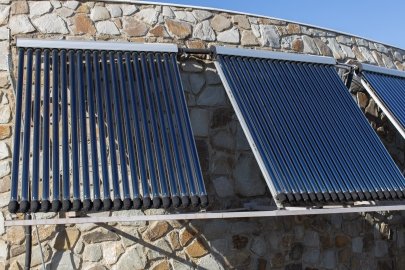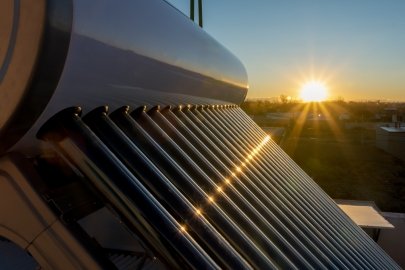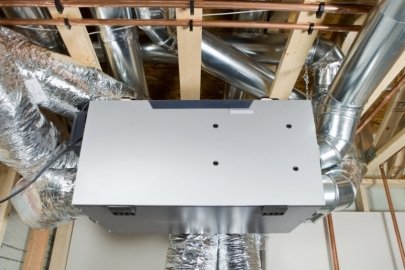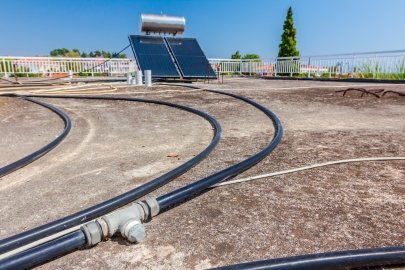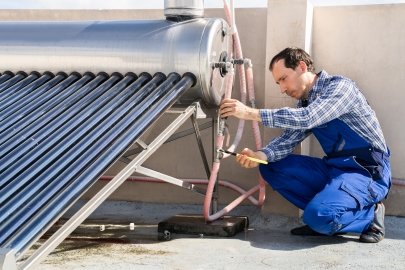Solar water heating systems cost more to purchase and install than conventional water heating systems. However, a solar water heater can usually save you money in the long run.
How much money you save depends on the following:
- The amount of hot water you use
- Your system's performance
- Your geographic location and solar resource
- Available financing and incentives
- The cost of conventional fuels that your conventional water heater would otherwise use (natural gas, oil, or electricity)
On average, if you install a solar water heater, your water heating bills should drop 50%–80%. Also, because the sun is free, you're protected from future fuel shortages and price hikes.
If you're building a new home or refinancing, the economics are even more attractive. Including the price of a solar water heater in a new 30-year mortgage usually amounts to between $13 and $20 per month. The federal income tax deduction for mortgage interest attributable to the solar system reduces that by about $3–$5 per month. So if your fuel savings are more than $15 per month, the solar investment is profitable immediately. On a monthly basis, you're saving more than you're paying.
Determining Energy Efficiency of a Solar Water Heater
Use the solar energy factor (SEF) and solar fraction (SF) to determine a solar water heater's energy efficiency.
The solar energy factor is defined as the energy delivered by the system divided by the electrical or gas energy put into the system. The higher the number, the more energy efficient. Solar energy factors range from 1.0 to 11. Systems with solar energy factors of 2 or 3 are the most common.
Another solar water heater performance metric is the solar fraction. The solar fraction is the portion of the total conventional hot water heating load (delivered energy and tank standby losses). The higher the solar fraction, the greater the solar contribution to water heating, which reduces the energy required by the backup water heater. The solar fraction varies from 0 to 1.0. Typical solar fraction values are 0.5–0.75.
For certified solar hot water systems the Solar Energy Factor and Solar Fraction are listed by the Solar Rating and Certification Corporation at https://solar-rating.org/. This certification also lists how much heat (kWh or Btu) the system will deliver per day under different conditions of sunlight and temperature.
Don't choose a solar water heating system based solely on its energy efficiency. When selecting a solar water heater, it's also important to consider size and overall cost.
Comparing Costs and Determining Payback for a Solar Water Heating System
Now that we know the cost of conventional heating we have to estimate what that would be reduced to and subtract that to estimate the savings in fuel associated with a solar water heater. In the SEF determination, the power required to operate pumps and controls also considered.
Annual Solar Energy Savings = Daily Hot Water Energy (therms/day)*(365 days/year)((1/EF)-(1/SEF))
For example the natural gas savings consumption from a solar system with an SEF of 2.5 would then be
Annual Solar Energy Savings = (0.4105 therms/day)*(365 days/year)((1/0.64)-(1/2.5))=174 therms/year
Prices for natural gas vary significantly by location and by month. In May 2021 the US average was $1.776/therm, a significant increase over earlier years. The average from 2011 to 2021 is about $1.50/therms and we will use that in our example. The associated Annual Solar Cost Savings would be:
(174 therms/year)*($1.50/therm) = $261/year
For and electric water heater with UEF=1.0 and electric price of $0.08/kWh the energy and cost savings per year would be:
Annual Solar Energy Savings = (12.03 kWh/day)*(365 days/year)((1/1.0)-(1/2.5))= 2634 kWh/year
And the associated Annual Solar Cost Savings would be:
(2634 kWh/year)*($0.1042/kWh) = $274.46/year
Operation and Maintenance Costs
Any cost associated with repairs of the system would subtract from this fuel cost savings. Residential solar hot water systems are designed to operate without intervention and reliability has evolved to the point that O&M costs should be minimal. Still, O&M costs are characterized as about ½ of 1% of initial cost, based on years zero O&M cost punctuated by occasional costs for such things as fluid replacement. Homeowners insurance usually covers damage from hail. If you want to include installation and maintenance costs, consult the manufacturer(s) and a qualified contractor to help estimate these costs. These costs will vary among system types and sometimes even from water heater model to model.
Now we need to determine the Once you know the ppurchase and annual operating costs of the solar water heating system and compare that with the costs associated with conventional water heating systems to calculate a payback on our solar investment.
Installed Cost
Cost estimates for household-sized solar water heaters are on the order of $100/sf ($1000/m2). Costs vary by collector type and system configuration as well as local market factors. This price might be typical of a location with local suppliers and robust competition. Reported prices vary all the way from $50/sf for unglazed swimming pool heater to $424/sf for a system in a report that uses evacuated tube solar collectors. For example, in 2003, 62 units, each with two 4 ft x 8 ft solar collectors, were installed in a housing area with an average cost of $4,000 per system, or $62.50/sf.
The SEF rating will be associated with a system with a certain number of solar collectors (1, 2 or more). A typical size for a home would be two solar collectors for an area of 64 or 80 sf. The cost of such a system might be on the order of $4,000 as described in the example above. The simple payback period would be the initial cost divided by the annual cost savings. When compared to natural gas in our on-going example:
Payback Period (years) = (Initial Cost $)/(Annual Cost Savings $/year)
When compared to natural gas in our on-going example:
($4000)/($261/year) = 15.3 years
And when compared to electricity:
($4000)/($274.46/year) = 14.5 years.
In areas where the energy costs are higher than assumed here, the paybacks are lower and it is in those areas where most installation activity occurs. These are areas with high energy prices such as Hawaii and California and places where low-cost natural gas is not available and more expensive fuel oil is used.
| System Models | System Price | SEF | Estimated Annual Operating Cost |
|---|---|---|---|
| System Model A | |||
| System Model B (higher SEF) | |||
| Additional cost of more efficient model (Model B) | Price of Sytem Model B - Price of System Model A = $Additional Cost of Model B | ||
| Estimated annual operating cost savings (System Model B) | System Model B Annual Operating Cost - System Model A Annual Operating Cost = $Model B's Cost Savings Per Year | ||
| Payback period for Model B | $Additional Cost of Model B/$Model B's Cost Savings Per Year = Payback period/years |
Example:
Comparison of two solar water heating system models with electric backup systems and electricity costs of $0.08/kWh.
| System Models | System Price | SEF | Estimated Annual Operating Cost |
|---|---|---|---|
| System Model A | $1,060 | 2.0 | $176 |
| System Model B | $1,145 | 2.9 | $121 |
| Additional cost of more efficient model (Model B) | $1,145-$1,060 = $85 | ||
| Estimated annual operating cost savings (Model B) | $176-$120 = $56 per year | ||
| Payback period for Model B | $85/$56 per year = 1.5 years |
Other Costs
When comparing solar water heating systems, you should also consider installation and maintenance costs. Some systems might cost more to install and maintain.
Consult the manufacturer(s) and a qualified contractor to help estimate these costs. These costs will vary among system types and sometimes even from model to model.
Subscribe to receive updates from Energy Saver, including updated content and energy saving tips for consumers and homeowners.


